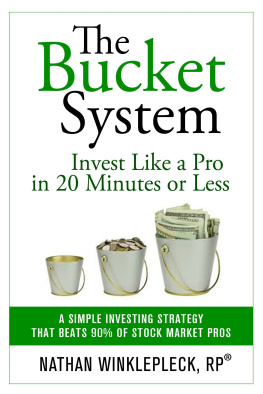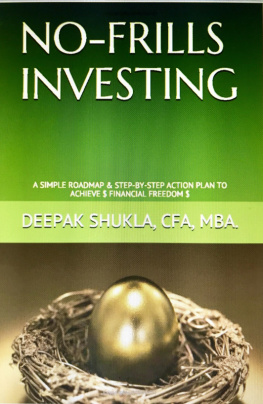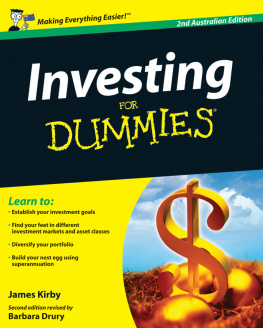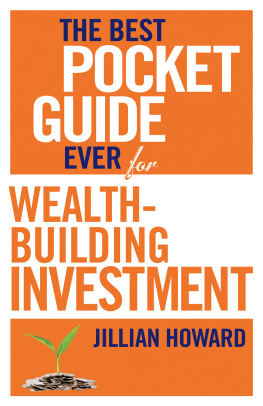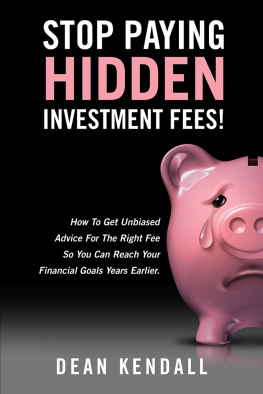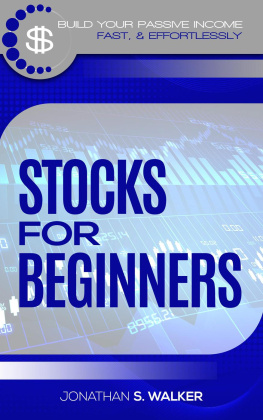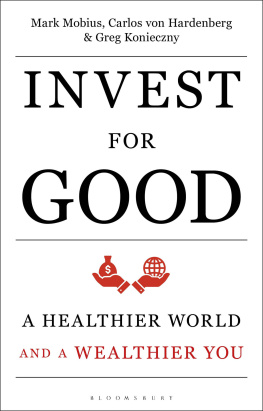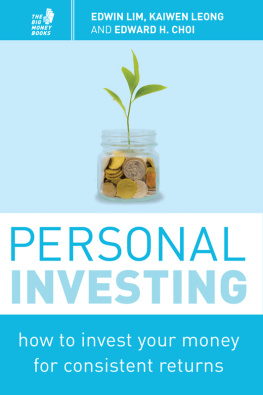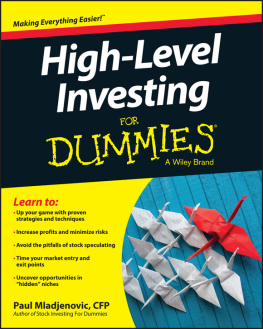C OPYRIGHT
Copyright 2015 by Nathan Winklepleck
All rights reserved. No part of this publication may be reproduced, distributed, or transmitted in any form or by any means, including photocopying, recording, or other electronic or mechanical methods, without the prior written permission of the publisher, except in the case of brief quotations embodied in critical reviews and certain other noncommercial uses permitted by copyright law.
T ABLE OF C ONTENTS
Introduction
Chapter One: Your Two Biggest Needs
Chapter Two: The Industry Standard
Chapter Three: A Better Way
Chapter Four: 5 Reasons It Works
Chapter Five: Bucket #1
Chapter Six: Bucket #2
Chapter Seven: Bucket #3
Chapter Eight: Step #1: Open An Account
Chapter Nine: Step #2: Determine Your Needs
Chapter Ten: Step #3: Invest Accordingly!
Chapter Eleven: The Top 9 ETFs
Chapter Twelve: 4 Rules for Success
Closing
I NTRODUCTION
On a beautiful spring afternoon twenty-five years ago, two young men graduated with the same degree from the same college. They were very much alike. Both men had obtained fantastic grades. Both were personable and charismatic. Both had dreams of a successful career, beautiful family, and healthy lives.
They went on to get similar jobs with similar pay. Both were promoted regularly and watched their incomes increase over time. Both eventually got married and had three children.
But there was a difference.
One of these men continued to move up the corporate ladder, his stress increasing faster than his pay, and his bills increasing faster than both. He once loved his job, but now dreads going to work every Monday. He often works 50+ hours per week and barely has time to spend with his wife and kids.
The other retired from full-time work at age 45. Each morning, he wakes up and has breakfast with his wife before dropping the kids off at school. After that, he would spend time with a friend, work on the book he was writing, or do some work for the not-for-profit he helped to start.
What Made The Difference?
The only difference between these two men was their investment strategies.
The first young man hired an investment advisor. Rather than recommending that he invest in low-cost index funds, the advisor saw an opportunity to profit from the young mans investing ignorance so he invested him in actively managed mutual funds. These funds boosted the advisors commission, but hurt the young mans future returns.
The advisor also recommended that the young man put far too much of his wealth into bonds hurting his returns. All-in-all, the young mans investment portfolio returned just 6% per year when it should have returned closer to 9%. At age 45, he had contributed $400,000 to his investments and earned $331,770 in profits. He had lost $291,433 to his advisors fees, mutual fund expenses, and a poor asset allocation.
Meanwhile, the second young man stumbled upon an investment strategy that was so simple that he was able to implement it without the help of an advisor. The strategy focused on low-cost investments, which meant he didnt pay exorbitant fees to Wall Street. And the strategy was effective enough that it increased his future returns without causing unnecessary short-term risks.
All-in-all, the second young mans investment portfolio returned roughly 8.9% per year. He had invested the same $400,000 to his portfolio, but it grew $331,769 more than the first young man. As a result, he was able to retire at age 45 while his friend continued to work likely for another 15+ years.
What Is This Investment Strategy?
Its called The Bucket System. Just like you might expect from the title, it really is not that complicated. You dont need a PhD in finance or any investment experience to do it. Its simple, low stress, and easy-to-follow.
If you can understand a few basic concepts, I believe you can dramatically improve your future investment returns and save hundreds of thousands of dollars in unnecessary management fees.
Over the next few chapters, Ill introduce you to The Bucket System. The book is organized into four parts.
- In Part I, well answer the question: Why Does It Work?. Id like to show you why the Bucket System is different from most investment systems and how those differences can dramatically improve your results.
- In Part II, well get into the nuts and bolts and take a look at each of the three investment buckets how are they designed, whats the purpose for each, and how they should be invested.
- Part III is all about action. Well cover the three steps you can take to get started. Ill also give you my top 9 index fund picks for the Bucket System and well explore 4 rules for success.
- Part IV tracks the real-life stories of three investors. Ill change their names (of course), but well look at how their unique situations determined their investment portfolio and how they got there using the Bucket Systems methodology.
Who Is This Book For?
- You want an investment strategy that is simple and easy-to-understand.
- Youd rather spend time with friends and family not managing your investment portfolio.
- You dont want to spend time hours each month researching new investment opportunities or following the financial media.
- You have an investment advisor that helps you manage your investments, but are concerned that he or she might not be investing you in the best way.
- You dont like the idea of paying Wall Street thousands of dollars in necessary fees and other expenses.
- You want to build long-term wealth so that you can eventually retire, but arent sure where to start.
- Youve found conflicting information about investing and just want a simple, common sense strategy to follow.
- You want an investment strategy that will help you stick with it even in the worst of market environments.
- You want to increase your future investment returns without taking on additional risk.
- You want to be able to customize your investment portfolio in a way that meets your specific needs.
If any of these apply to you, then this book might be a good fit for you. I hope youll join me for a few moments to check out the Bucket System! If not, I wish you the best with your investment future. If so, then lets get started.
P ART I: W HY I T W ORKS
C HAPTER O NE
Y OUR T WO B IGGEST N EEDS
Most every person in the U.S. has two specific needs from investing. Unless you are one of the super wealthy (and since youre reading this book, Im assuming you arent), you are in the same boat. Any good investment strategy should address both of these needs.
1. You need to get a stock-like return to build wealth over a long period of time.
I dont know many people that could manage to save up enough for retirement without a little help from their investments. If you think you can, consider that youll likely need to save up 25 times whatever you spend today. My family spends about $25,000 per year, which means we need to save up at least $625,000 to continue our spending in retirement. Im 26 years old, so that leaves me with roughly 40 years to save up $625,000. Id need to manage to shovel away $15,000 per year.
But thats not considering inflation. The value of every dollar in my pocket declines each and every day. In any given year, it declines by 3% on average. That means Im going to need to save up significantly more than $625,000 to retire. In 40 years, the value of each dollar will be worth 1/3 of whats worth today. My spending will have to increase to more than $80,000 per year to maintain my current standard of living. That means Ill need more like 25 x $80,000 = $2 million in retirement.

